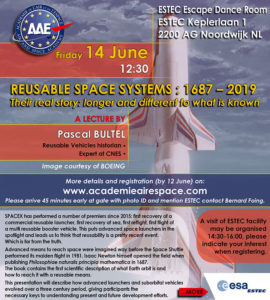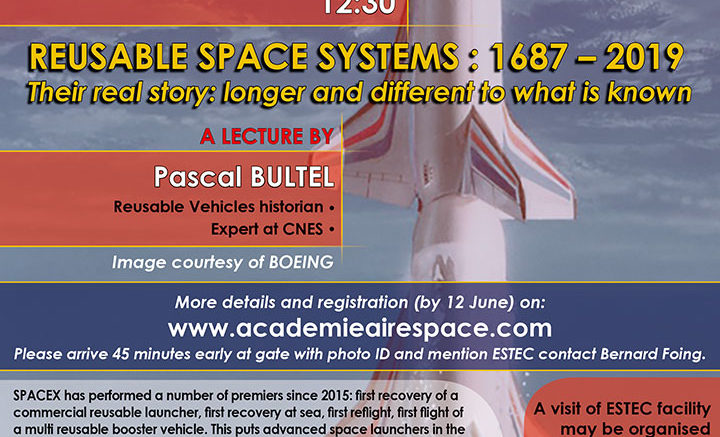Keplerlaan 1- 2200 AG Noordwijk NL

Organizer Académie de l’Air et de l’Espace / Air & Space Academy
Partnership ESA ESTEC
Lecture by Pascal Bultel, Expert at CNES, former airline world engineer and historian.
SPACEX performed a number of premiers since 2015 : first recovery of a commercial reusable launcher, first recovery at sea, first reflight, first flight of a multi reusable booster vehicle. This sheds light on advanced space launchers more than ever before and pushes to think that reusability is a pretty recent event. Which is far from the truth. Which is far from the truth.
Advanced means to reach space were imagined way before the Space Shuttle performed its maiden flight in 1981. Isaac Newton himself open the field when publishing Philosophiae naturalis principia mathematica in 1687. The book contains the first scientific description of what earth orbit is and how reaching it with a reusable mean. Some two centuries later Konstantin Tsiolkovski was on the same line, working on reusable aerospace concepts. When finally becoming reality in the late 1950s / early 1960s space travel soon produced a large number of reusable concepts that took decades to mature. The most popular is the FALCON 9 which relies on roots firmly established by Philip Bono, a Douglas Corp. engineer as soon as 1959.
The presentation will describe how advanced launchers and suborbital vehicles evolved over a three century period. This large overview will give participants the necessary keys to understand present and futures development efforts.
A visit of ESTEC facility may be organised 14:30-16:00, please indicate your interest when registering.
Please arrive 45 minutes early at gate with photo ID and mention ESTEC contact Bernard H. Foing.
More details and registration (by 12 June) on: https://academieairespace.com/en/event/reusable-space-systems-1687-2019/







